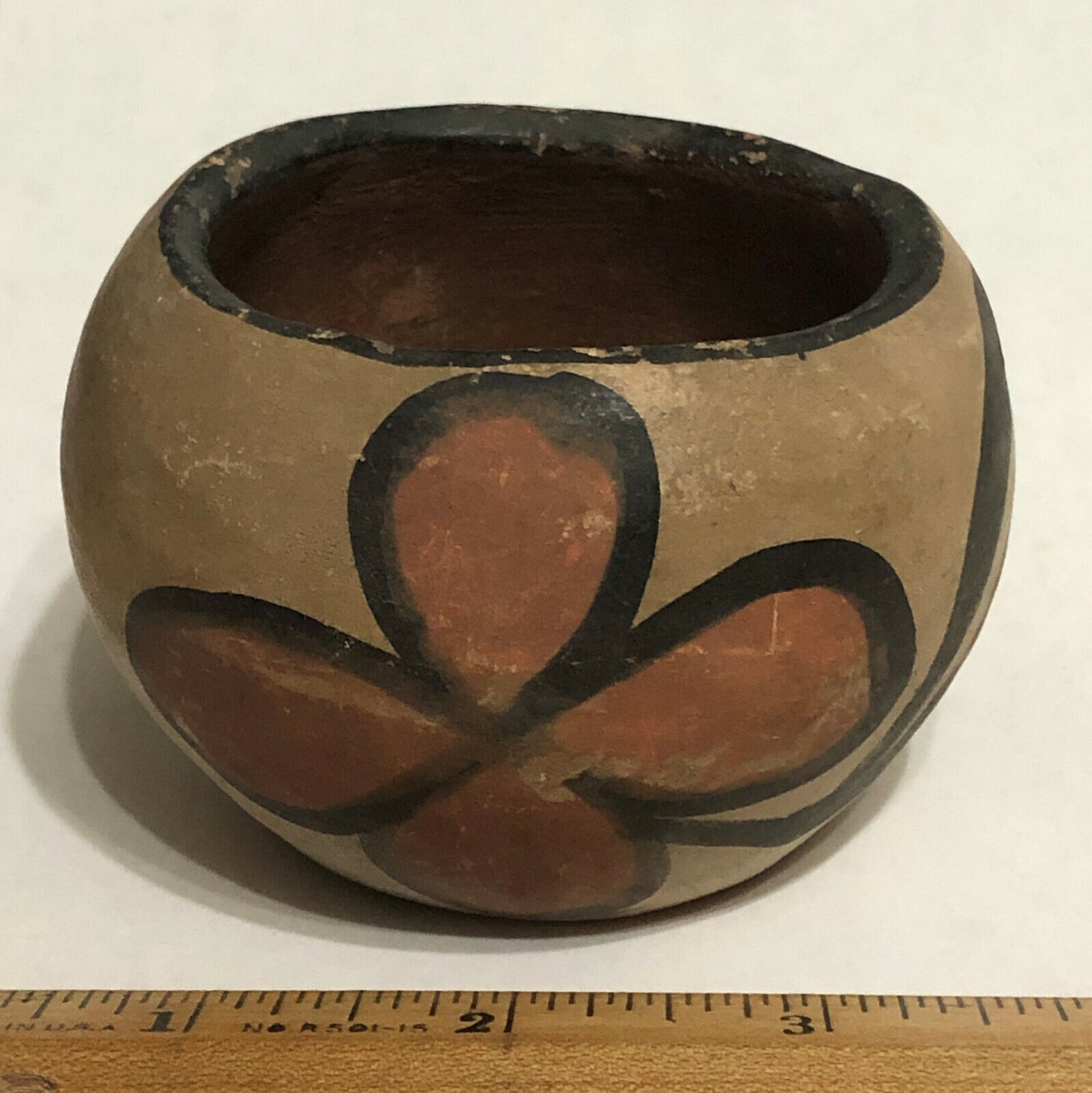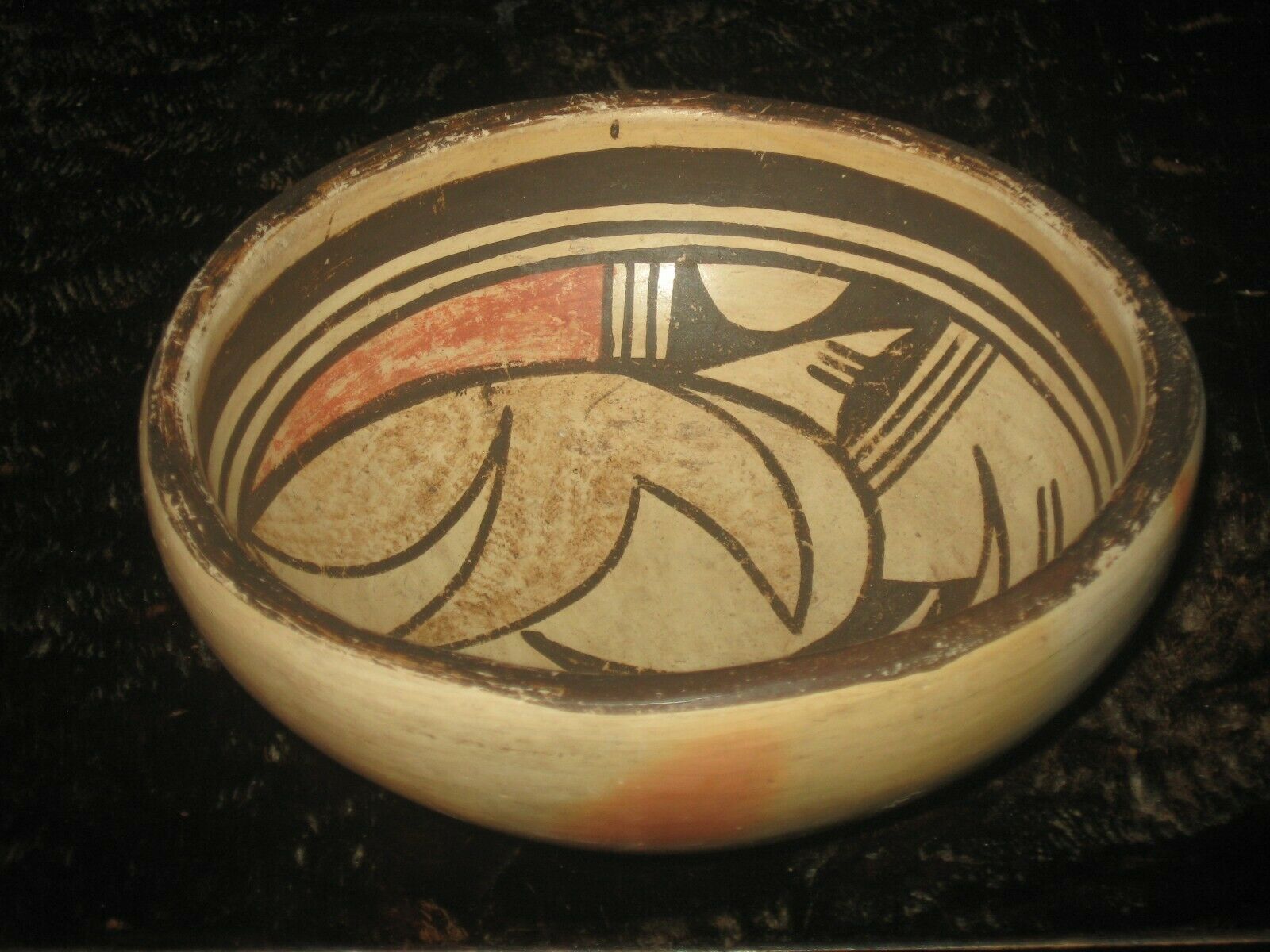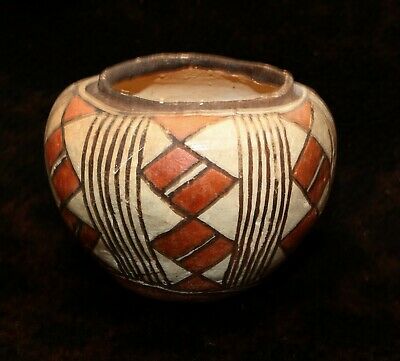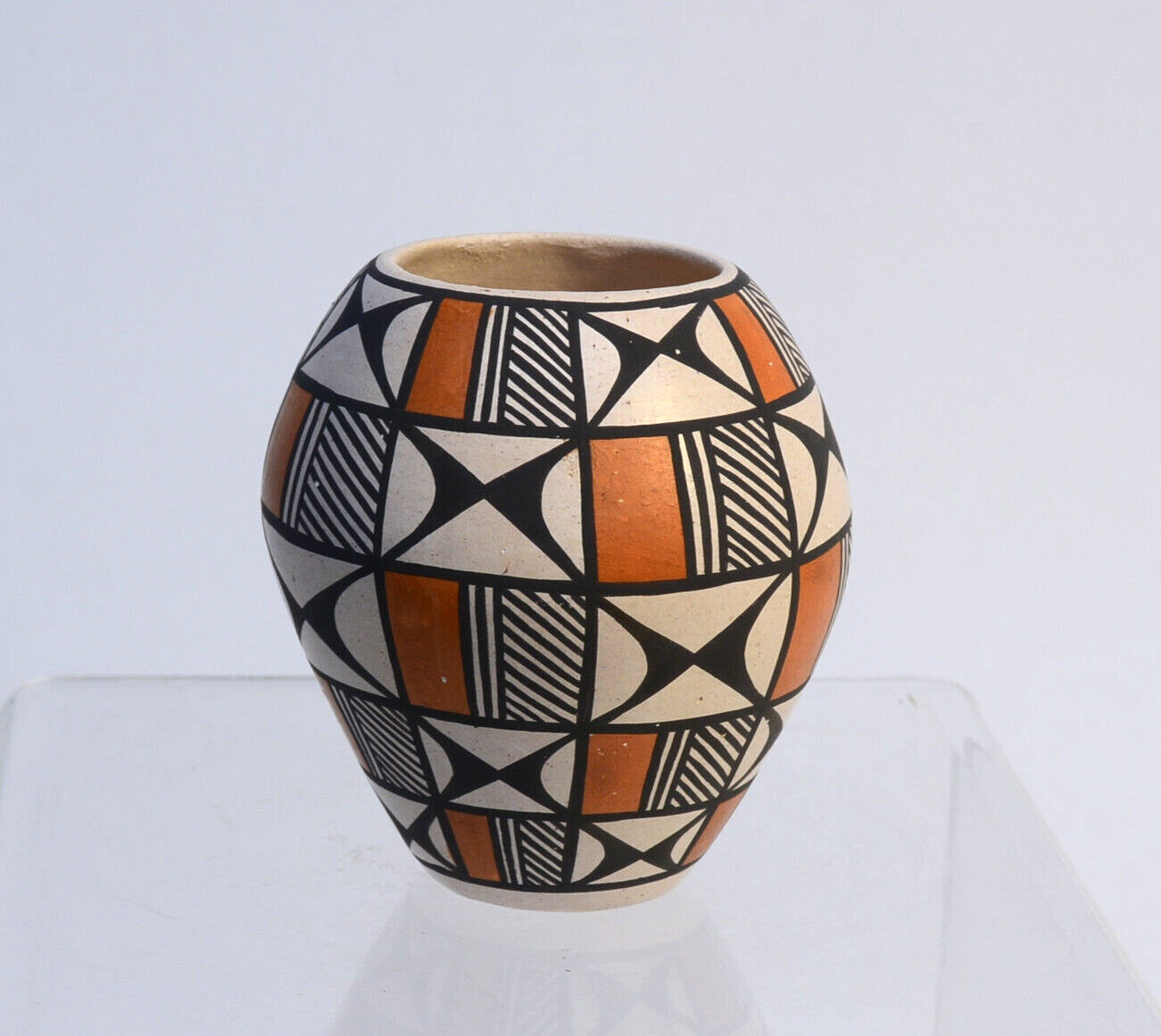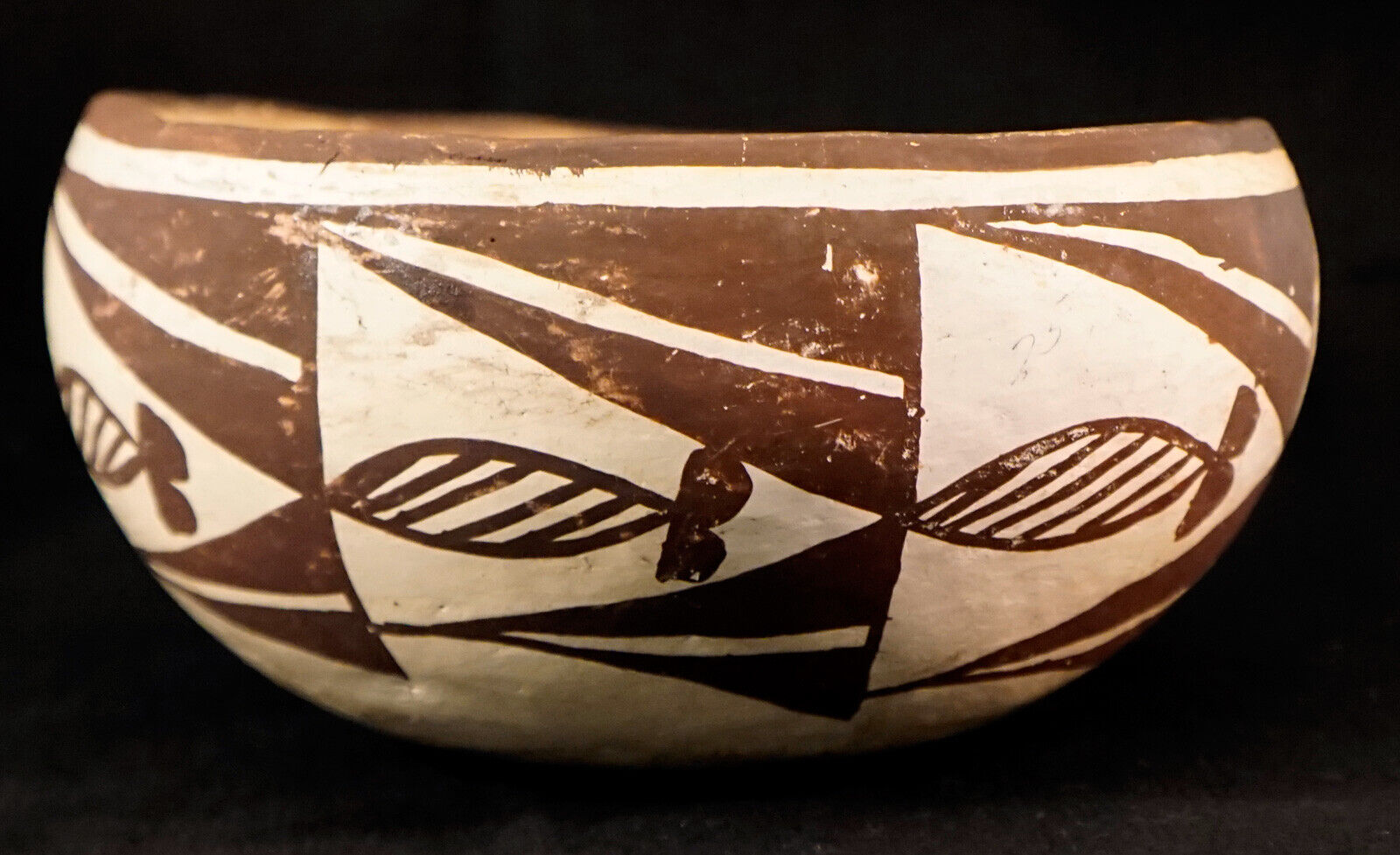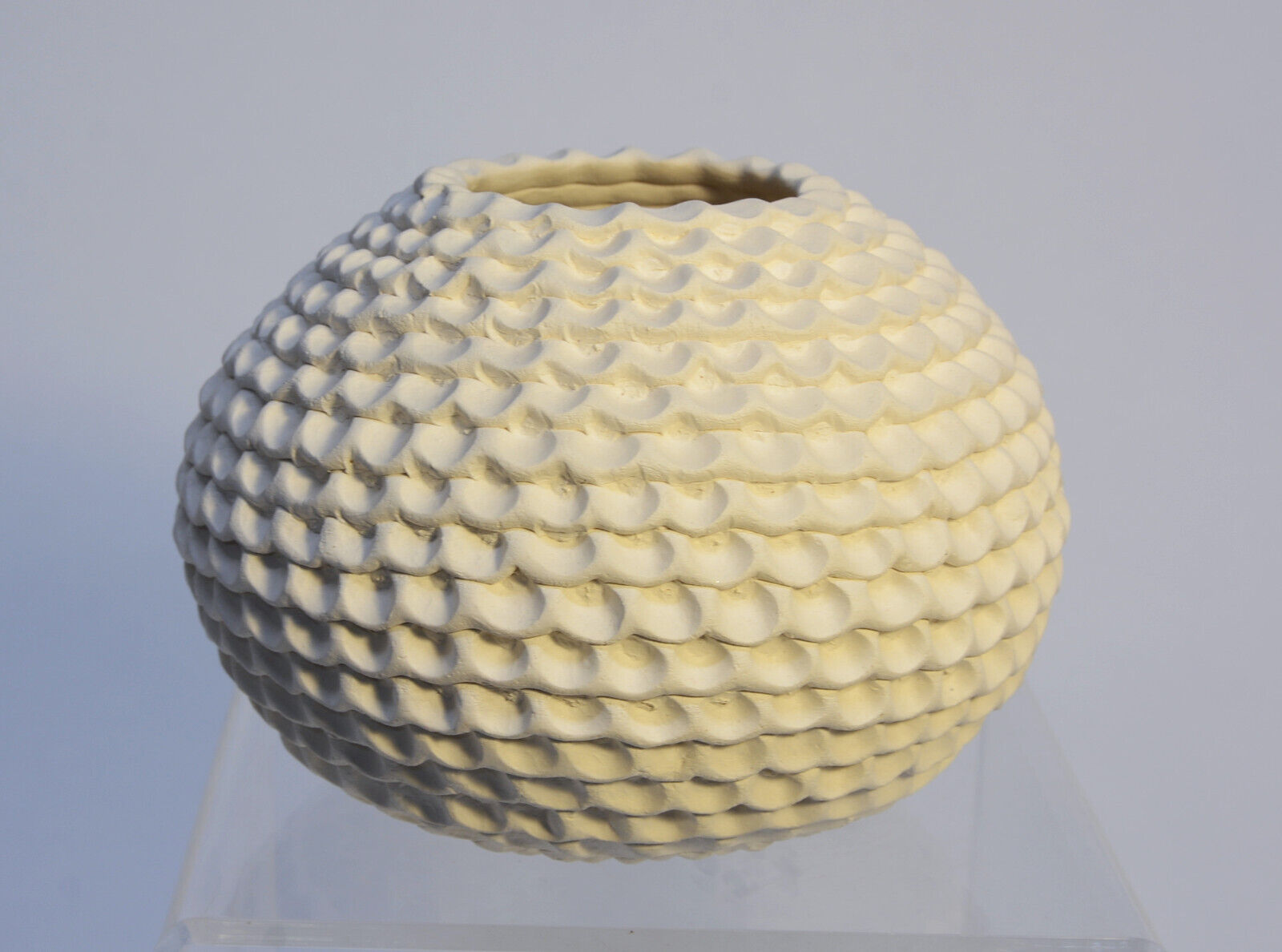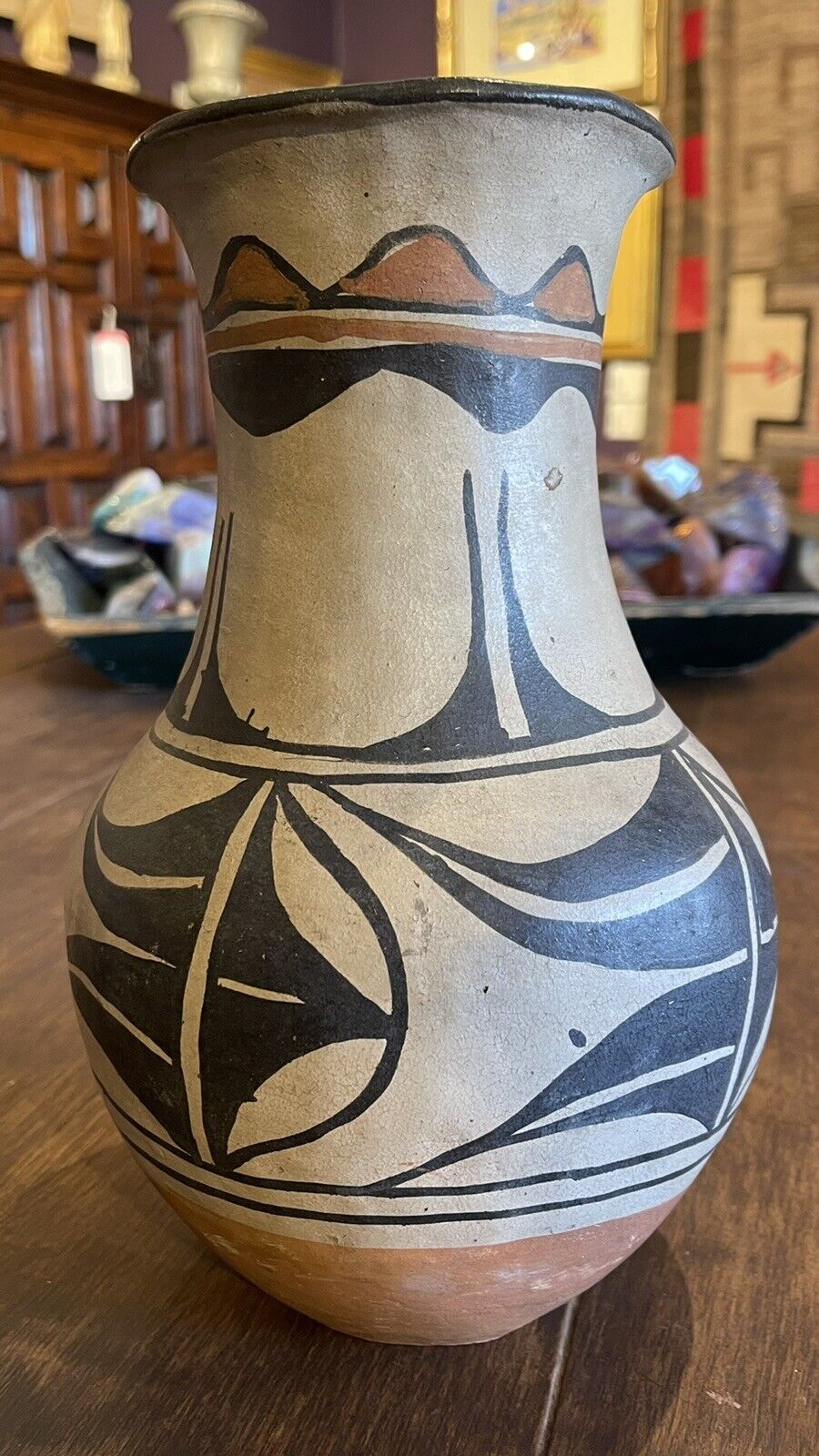-40%
New Mexico Kewa Pueblo Santo Domingo pot circa 1920-30s
$ 18.48
- Description
- Size Guide
Description
New Mexico Kewa Pueblo Santo Domingo Pot with Flowers circa 1920-30’sThe people of Santo Domingo Pueblo (Now called by the traditional name of Kewa) have been in the general area of the Pajarito Plateau since the 1200's. Kewa Polychrome seems to have developed in the 1880's and has been a mainstay of pottery design in the pueblo ever since.
The Aguilar family started a "reverse painting"trend around 1910 by covering the cream-colored slip almost entirely with black and red. The polychrome designs feature animals, leaves and flowers. It is strictly forbidden to paint human forms or sacred symbols on any pottery that isn't ceremonial pottery.
Kewa Pueblo was on the route of the continental trains bythe early 1900s.
As a convenience to its travelers, the trains stopped at the pueblo long enough for the Indians to board the train and sell their pottery and jewelry.
As a result, Kewa potters were early to adapt their pottery to the needs of the travelers. They made shapes the travelers were familiar with, and they made small pieces the travelers could conveniently take in their baggage.
This small pot is a good example of the style made for sale to the tourists. It is traditional in all aspects of manufacture. It was probably made around 1920-30. It exhibits the classic traits of late Santo Domingo Polychrome. The interior and the underbody were slipped with red clay.The rim is black. The cream/off-white is rag-wiped bentonite slip and the floral leaf designs were executed in black vegetal paint and the flower petals in red clay.
This is an excellent example of early tourist wares.
See photos for best description.
